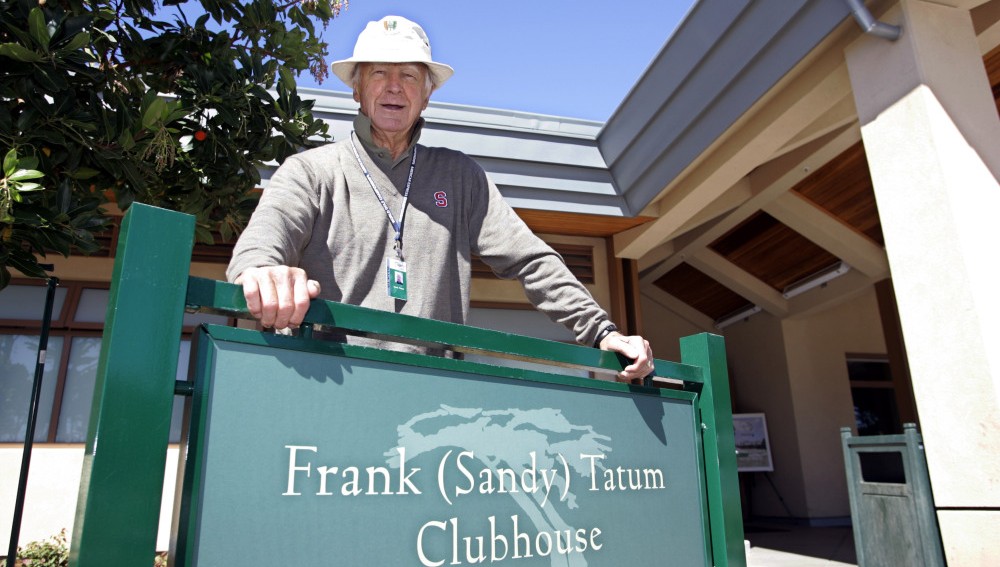Frank “Sandy” Tatum, former president of the Untied States Golf Association and a member of the Stanford Athletic Hall of Fame, died in San Francisco at the age of 96.
Tatum was known for setting up United States Open courses as the most difficult in golf, leading to what was known as “The Massacre at Wing Foot,” where Hale Irwin captured the title with a score of 7-over-par.
“We’re not trying to humiliate the best players in the world, we’re simply trying to identify them,” Tatum said famously:
Executive Mike Davis of the USGA, who has continued the legacy of tough set-ups for the U.S. Open, said in a statement: “All of us at the USGA are deeply saddened by the passing of truly one of the great individuals ever involved with golf. Sandy Tatum certainly impacted the USGA in immeasurable ways, but more important were his countless and significant contributions to the game. He will long be remembered as one of the greats in golf.”
Tatum grew up in the Los Angeles area before heading to Stanford, where he led the Cardinal to the 1941 and 1942 NCAA Championships, claiming the individual national title in 1942.
Tatum was a Rhodes Scholar and after graduation from Stanford he attended Oxford University and earned a Bachelor of Civil Law degree, returning to Stanford for his Juris Doctor in 1950, and became a successful lawyer in the Bay Area.
Tatum served as USGA president in 1978 and 1979, and was a member of the USGA Executive Committee from 1972-80.
Tatum was member at San Francisco Golf Club and Cypress Point Club in Pebble Beach, and led the restoration of San Francisco’s municipal course at Harding Park, which is now known as TPC Harding Park. He also was chairman of the First Tee of San Francisco.
In addition, Tatum was involved in the design and development of The Links at Spanish Bay in Pebble Beach, and co-designed Lockeford Springs Golf Course in Lodi, Calif., and Mount Shasta Resort in Mount Shasta, Calif.
Tatum’s wife, Barbara, whom he met at Stanford, died in February at the age of 92.

